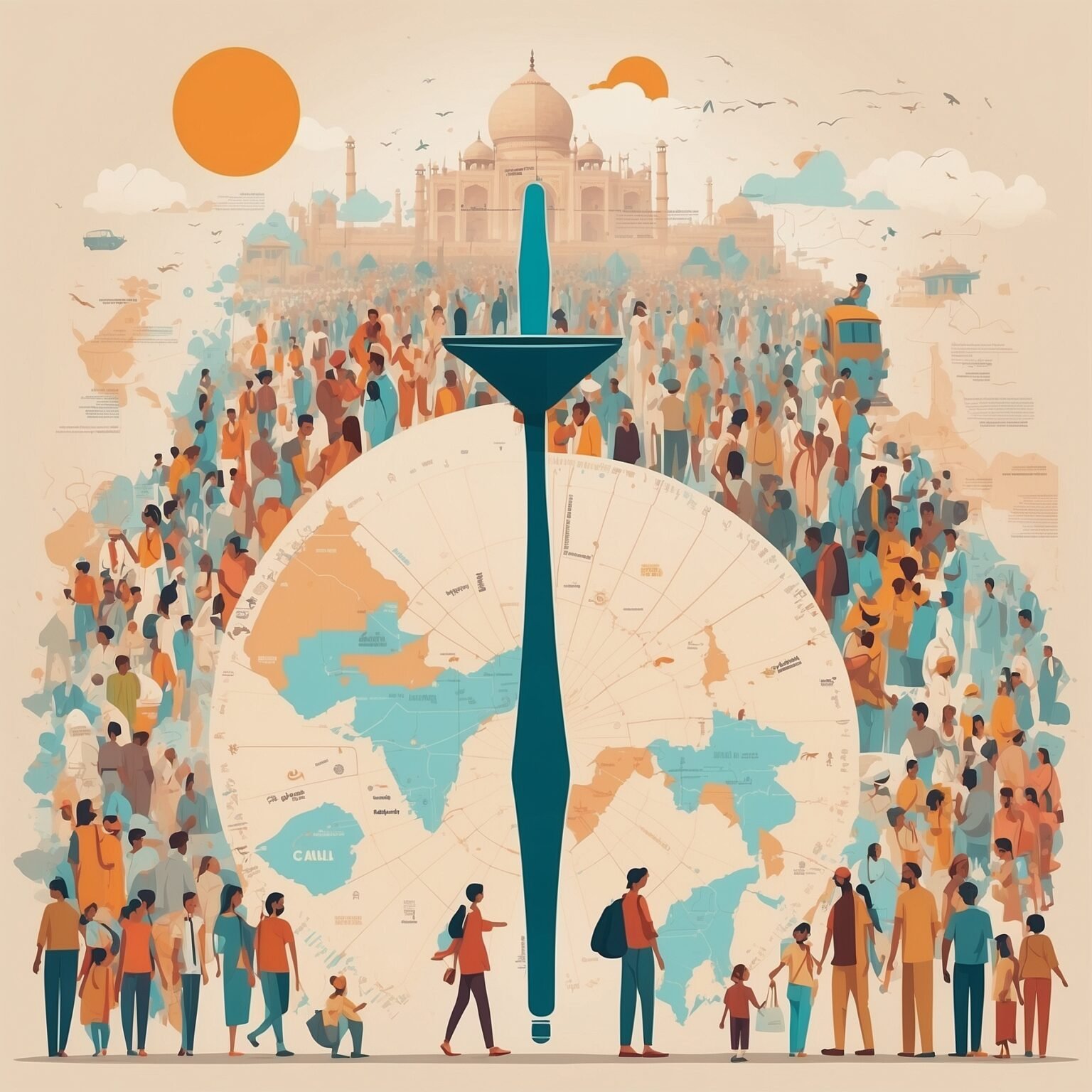India Faces Population Decline in 38 Years: UN Report
India is projected to reach its peak population of 1.701 billion by 2062, according to the latest United Nations (UN) World Population Prospects report. With only 38 years left before its population starts to shrink, India is currently the most populous country globally and is expected to maintain this status until the end of the century.
The report reveals that India’s population will begin to decline between January and July 2062, adding approximately 222,000 people that year before the numbers start to decrease. By 2063, the population will reduce by around 115,000 people, a figure that will continue to rise to 437,000 in 2064 and 793,000 in 2065.
As of now, India is home to 1.451 billion people, surpassing China’s 1.419 billion and the United States’ 345 million. By 2054, India and China will retain their positions as the two most populous countries, while Pakistan is expected to surpass the United States, becoming the third most populous country with 389 million people. These rankings are anticipated to remain unchanged until the end of the 21st century.
On a global scale, the UN predicts that the world population will peak at around 10.2 billion by 2083, after which it will begin to decline. Currently, the global population stands at approximately 8.16 billion.
The report also highlights that the highest population growth between 2024 and 2054 will occur in African countries. Nations such as Angola, the Central African Republic, the Democratic Republic of Congo, Niger, and Somalia are expected to see their populations double during this period.
However, in about 100 countries and regions, including India, the share of the population within working ages (20 to 64 years) will increase more rapidly than the total population, presenting a demographic dividend — a window of opportunity for economic growth. By 2080, the report projects that people aged 65 and above will outnumber those under 18 years globally.
The UN emphasizes the need for countries, especially those with peaking populations, to leverage technology and automation to boost productivity across all age groups. It also suggests creating more opportunities for lifelong learning, supporting multigenerational workforces, and extending working lives for those willing and able to continue working.
Additionally, the report highlights a significant decline in fertility rates worldwide. Compared to 1990, women are now having one fewer child on average. In over half of all countries and regions, the average number of live births per woman is below the replacement level of 2.1, necessary to maintain a stable population without migration. Notably, nearly one-fifth of all countries, including China, Italy, the Republic of Korea, and Spain, now have “ultra-low” fertility rates, with fewer than 1.4 live births per woman over a lifetime.


